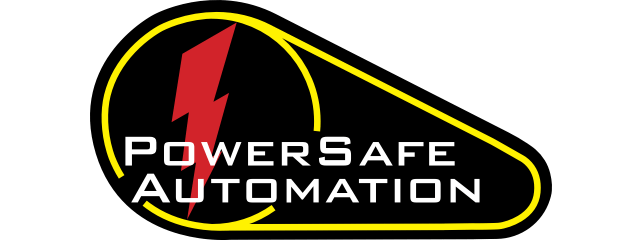Traditionally manual, part fixturing involves securing a component in place during machining, welding, testing, or assembly operations. But with increasing demands for precision, speed, and cost control, automated part fixturing is emerging as a smart, scalable solution for modern production lines.
Whether you’re running a high-mix low-volume operation or a continuous production facility, automated fixturing systems can dramatically improve your throughput, part quality, and workforce safety. This article explores the top 5 benefits of automated part fixturing and how it can revolutionize your manufacturing processes.
1. Increased Production Efficiency and Speed
Manual fixturing consumes time and introduces bottlenecks, especially in high-volume operations. Automated part fixturing eliminates the repetitive and time-consuming task of manually loading and securing parts.
Key benefits:
-
Faster cycle times: Automated clamping and positioning reduce fixture setup time from minutes to seconds.
-
Higher throughput: Machines spend less time waiting for operators, boosting overall production rates.
-
24/7 operation: When integrated with robotics or CNC systems, automated fixtures support continuous manufacturing—even in lights-out environments.
For example, in precision machining, automated fixturing ensures parts are consistently and rapidly positioned, allowing cutting tools to perform at optimal efficiency. This is especially valuable in automotive and aerospace sectors where volume and tolerances are critical.
2. Improved Part Quality and Consistency
Part accuracy depends heavily on how consistently it is fixtured. Manual loading introduces variation due to operator fatigue, misalignment, or inconsistent clamping pressure.
Automated fixturing ensures:
-
Repeatable positioning within tight tolerances
-
Uniform clamping force to reduce distortion or stress
-
Minimized human error in alignment and orientation
This results in fewer defects, less scrap, and more reliable assemblies. Industries like electronics and medical device manufacturing benefit greatly from the precision of automated fixturing—where even slight misalignments can render a part unusable.
3. Enhanced Safety and Ergonomics
Manual fixturing can involve awkward postures, repetitive motion, and potential pinch-point injuries. Automating this process improves operator safety and creates a more ergonomic working environment.
Safety improvements include:
-
Reduced need for physical force or hand tools
-
Elimination of manual clamping near dangerous tooling
-
Improved workstation design with programmable positioning
By removing the operator from the immediate production area, you reduce the risk of accidents while also aligning with OSHA’s machine guarding standards. This shift is especially helpful in facilities with aging workforces or high injury rates due to repetitive stress.
4. Greater Flexibility for Part Changeovers
High-mix manufacturing environments often struggle with fixture changeover time and complexity. Automated fixturing systems—especially modular and programmable ones—are designed to handle rapid part changeovers with minimal manual intervention.
Benefits for flexible manufacturing include:
-
Quick part swapping via smart tooling or vision systems
-
Programmable fixtures that adapt to different sizes or geometries
-
Reduced need for custom fixtures for every part
This flexibility helps manufacturers stay agile without compromising on speed or quality. It’s a major advantage in industries like contract manufacturing or prototyping, where each job run may involve different specs.
5. Lower Long-Term Operational Costs
While the upfront cost of automated fixturing may seem high, the long-term savings make it a worthwhile investment.
Cost-saving advantages include:
-
Less scrap and rework due to positioning errors
-
Lower labor costs through automation
-
Decreased tool wear and downtime from improperly loaded parts
-
Extended fixture life with programmable control systems
Additionally, automated fixtures can be integrated with IIoT sensors to provide real-time feedback, predictive maintenance alerts, and overall equipment effectiveness (OEE) data. This allows smarter decision-making and proactive maintenance, reducing unscheduled downtime.
Real-World Applications of Automated Part Fixturing
PowerSafe Automation has seen successful implementations of automated part fixturing across industries:
-
Automotive: Robotic fixturing for repeatable engine block machining
-
Aerospace: Precision alignment of composite panels with pneumatic clamps
-
Consumer Goods: Modular fixturing in high-speed plastic molding lines
-
Medical Devices: Hygienic stainless-steel fixturing for surgical tool assembly
Each application reveals how a well-designed fixturing system can be tailored to meet specific production goals while reducing risk and waste.
How to Implement Automated Fixturing in Your Facility
If you're considering making the switch to automated fixturing, here are the key steps to success:
-
Analyze Your Current Processes: Identify bottlenecks in setup or changeovers.
-
Prioritize High-Impact Areas: Focus on stations with high volume or frequent quality issues.
-
Choose the Right Technology: Options include pneumatic, hydraulic, electric, and modular smart fixtures.
-
Partner with Experts: Collaborate with an automation partner like Power Safe to customize solutions to your part geometries and cycle times.
-
Train and Support Your Team: Ensure operators and maintenance staff are ready to work with the new systems.
Conclusion: Why Now is the Time for Automated Fixturing
Automated part fixturing is more than a productivity upgrade—it’s a strategic enabler of smart manufacturing. It supports lean principles, improves worker safety, and ensures consistent product quality, all while lowering long-term costs. With global competition and customer expectations rising, adopting intelligent fixturing solutions positions your facility for future success.



